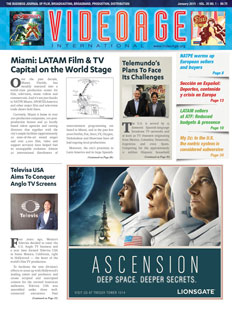January 2015
Volume 35 No. 1
My Two Cents
In the U.S. the metric system has been found to be subversive. It’s better to stick with fractions of inches and to use ounces to indicate both volume and weight and to say water freezes at 32 or 29 degrees!
By Dom Serafini
The British insist on driving on the left side and Americans on measuring in inches. Only three countries in the world continue to use inches, feet, miles, gallons and ounces: the U.S., Burma (Myanmar) and Liberia. As for the U.S., a new book reveals the surprising reason.
The United States’ anachronistic measurement system has always puzzled foreigners and even some Americans as well. Although in the 1970s the U.S. had developed a popular movement for the adoption of the metric system, it was short-lived.
Therefore, today all U.S. weather reports give temperatures in Fahrenheit, precipitation in inches and wind speed in miles per hour. It’s widely known that 32 degrees F corresponds to zero degrees centigrade, but when it comes to converting the two measures, that’s where the problem starts because one must first subtract 32 from the Fahrenheit temperature and then multiply the result by five, and then divide the product by nine to obtain the centigrade, which in America is called Celsius, the name of the Swedish physicist Anders Celsius, who in 1742 developed the decimal system (18 years after the German Gabriel Daniel Fahrenheit created the system that bears his name). It is possible that, for Americans, the word “centigrade” is too difficult to pronounce.
But it gets even more complex when NATPE sends the booth measurements. For example, 25 cm become 9.843 inches, but an inch is divided into 16 parts, so to get to the remaining 0.843 inches, after the nine, one must count approximately 13.5 marks on the ruler.
However, for some real “fun” let’s tackle how volume is measured in the U.S. A gallon (3.78 liters) contains 128 ounces (oz.). Ounces are used to indicate both weight and volume, distinguished by “fluid” ounces (written as FL ounces) and “weight” ounces (indicated simply as ounces). One liter of water contains 33.8 FL ounces and weighs 35.27 ounces, but not at the Fontainebleau’s shops where a liter of mineral water is weighed in gold and at the bars a glass of wine (148 mL or five FL. oz.) costs $21.
And to think that Americans were the first to use a decimal model for currency, proposed by Thomas Jefferson and adopted in 1784, even before France became the first country in the world to adopt the decimal system of measurements in 1795 (Mexico adopted it in 1857, Italy in 1861, the U.K. in 1965 and Canada in 1970).
The reason for the failure of the metric system in America has now been revealed in the book Whatever Happened To The Metric System? published by Bloomsbury in London, and written by the American author John Bemelmans Marciano.
According to Marciano, the reason the proposal to adopt the metric system in the U.S. was left to die in 1982 stems from the fact that in the early ’70s, when it was proposed for the second time (after the first approach made about 200 years before by Jefferson), some conservative leaders mounted a vigorous campaign against it. Among them was Dean Krakel, director of the National Cowboy Hall of Fame in Oklahoma, whose position was that “Metric is definitely Communist.”
Another opponent was the syndicated columnist from Chicago Bob Greene, founder of the organization WAM! We Ain’t Metric, who said that it was all an Arab plot “with some Frenchies and Limeys thrown in.”
Yet, the aversion to the metric system did not come only from fanatical conservatives, but also from liberals like Stewart Brand, editor of Whole Earth. Even the radical chic New Yorkers made fun of the metric system as a “foot ball” (as two words, to indicate how to measure length and “ball” like a bouncing ball).
Under the crossfire of criticism, the United States Metric Board, the governmental committee created by President Gerald Ford in 1975, was disbanded seven years later.
And so, even today, in the U.S. one pound equals approximately 0.45 kg that equals 16 ounces, and each ounce is about 28.35 grams. But since it is too complicated for Americans to use ounces, grocery stores use fractions of a pound, such as 1/4 of a pound of ham, rather than four ounces, and instead of just saying, for example, “three centimeters,” Americans have to juggle with an inch and 1/16. All because of the Communists.

